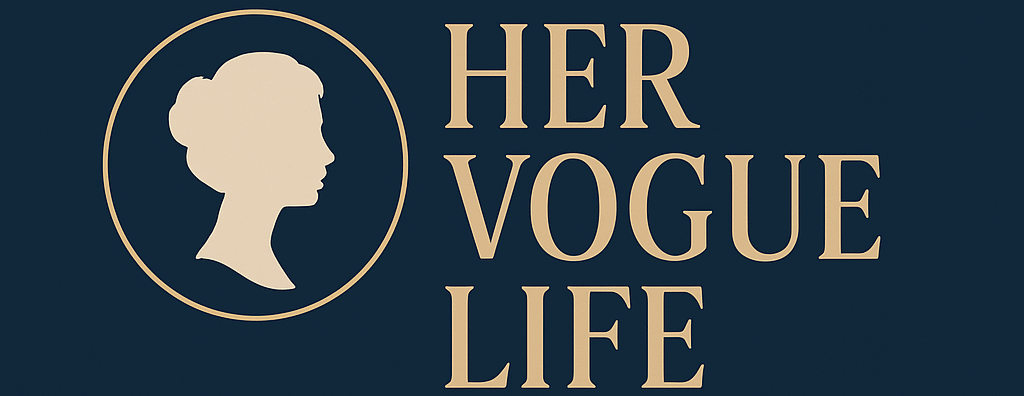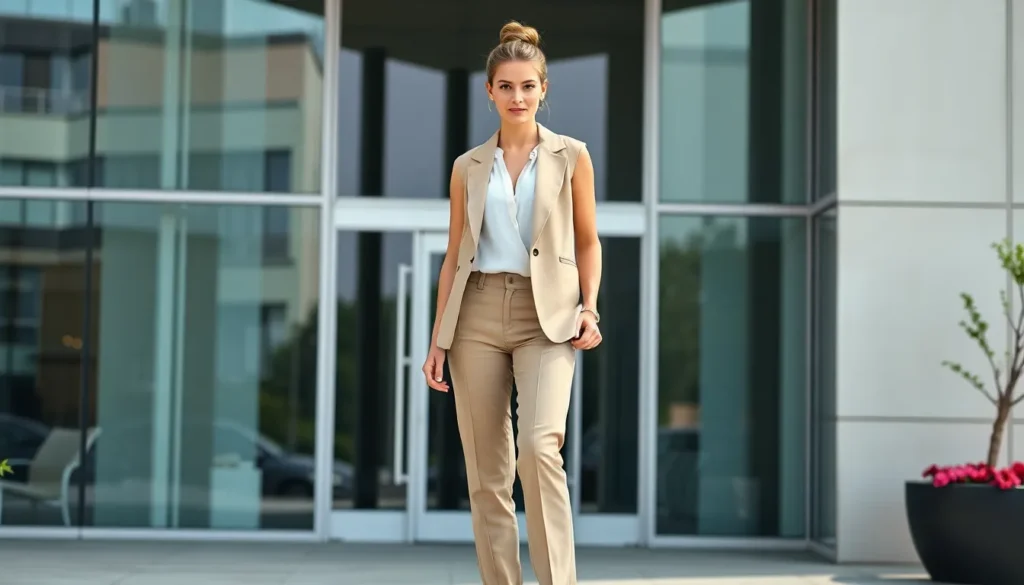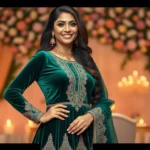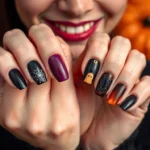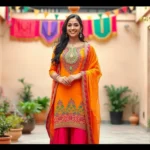When summer temperatures soar and you’ve got that crucial job interview lined up, finding the perfect outfit becomes a real challenge. We know you’re wondering how to look professional and polished while staying cool and comfortable in the heat. The struggle is real – you want to make an impressive first impression without melting before you even walk through the door.
The good news? We’ve cracked the code on summer interview dressing that’ll have you looking like the confident professional you are. From breathable fabrics that won’t wrinkle to colors that command respect, there are proven strategies that successful women use to nail their summer interview look.
Whether you’re interviewing at a corporate office or a startup, we’ll show you exactly how to strike that perfect balance between professional polish and summer-appropriate comfort. Let’s jump into the essential pieces that’ll help you land your dream job while beating the heat.
Choose Breathable Fabrics That Keep You Cool and Professional
Selecting the right fabric makes all the difference between feeling confident and overheating during your summer interview. We’ll guide you through the best fabric choices that maintain professional appearance while keeping you comfortable.
Cotton Blends for Comfort and Structure
Cotton blend fabrics offer the perfect balance of breathability and professional polish for summer interviews. These versatile materials combine cotton’s natural cooling properties with synthetic fibers that resist wrinkles and maintain shape throughout the day. Popular blends include cotton-polyester mixes and cotton-spandex combinations that provide stretch and recovery.
Structured cotton blends work exceptionally well for blazers and dress pants because they hold their form without requiring frequent adjustments. We recommend choosing blends with at least 60% cotton content to ensure maximum breathability. Ponte knits and cotton-modal blends are particularly effective for maintaining a crisp appearance while allowing air circulation.
Quality cotton blend pieces dry quickly if you perspire and won’t show sweat marks as readily as synthetic fabrics. Look for garments labeled as “wrinkle resistant” or “easy care” to minimize maintenance between interviews.
Linen Options for Hot Weather Interviews
Linen stands out as nature’s most breathable fabric, making it ideal for scorching summer interview days. This natural fiber allows exceptional air flow and wicks moisture away from your body effectively. Modern linen blends combine traditional linen with small amounts of cotton or rayon to reduce excessive wrinkling while maintaining cooling properties.
Professional linen pieces include customized blazers, straight-leg trousers, and structured dresses that maintain appropriate business attire standards. We suggest choosing linen in darker colors like navy, charcoal, or deep jewel tones that camouflage minor wrinkles and look more formal than traditional beige or white linen.
Linen-cotton blends typically contain 70% linen and 30% cotton, providing the best of both worlds for interview wear. These fabrics keep you cool while offering enough structure to look polished and professional throughout your meeting.
Moisture-Wicking Materials for All-Day Comfort
Moisture wicking fabrics actively pull sweat away from your skin and help it evaporate quickly, keeping you dry and comfortable during stressful interview situations. These technical fabrics include performance polyester blends, merino wool, and bamboo fiber combinations that regulate body temperature naturally.
Modern moisture wicking materials look and feel like traditional professional fabrics but offer superior comfort in hot weather. Merino wool blends are particularly effective because they naturally resist odors and regulate temperature whether you’re in air conditioning or outdoor heat. Bamboo-based fabrics provide silk-like smoothness with excellent moisture management properties.
Performance fabrics work best for underlayers like camisoles and undershirts, while moisture wicking blazers and dresses are becoming increasingly available from professional clothing brands. We recommend testing these materials beforehand to ensure they meet your comfort and style preferences for important interviews.
Select the Perfect Summer Blazer for Your Interview Look

Your blazer choice can make or break your summer interview outfit. We’ll help you navigate the options that keep you cool while maintaining that essential professional edge.
Lightweight Blazer Styles That Won’t Overheat
Cotton blazers deliver the perfect balance of structure and breathability for summer interviews. These natural fiber options allow air circulation while maintaining the crisp appearance employers expect. Linen blazers offer exceptional cooling properties and work beautifully in modern blends that resist wrinkles throughout your interview day.
Cotton tweed provides a sophisticated texture that’s surprisingly lightweight for warmer weather. This fabric choice adds visual interest without compromising comfort or professionalism. Rayon blends create fluid draping that moves with your body while keeping you cool during those nerve-wracking interview moments.
Cropped blazers present a stylish alternative that reduces fabric coverage without sacrificing polish. These shorter styles work particularly well with high-waisted pants or pencil skirts. Unstructured blazers eliminate heavy padding and interfacing that can trap heat against your body.
Sleeveless Blazer Alternatives for Extreme Heat
Vests transform your interview look when temperatures soar beyond comfortable blazer territory. These sleeveless options provide the structured professional appearance of a blazer while eliminating arm coverage that causes overheating. Lightweight cardigans offer another layer option that you can easily remove if the interview location is air conditioned.
Structured tank tops with customized details can substitute for traditional blazers in creative industries. These pieces maintain professionalism while keeping you significantly cooler than sleeved options. Sleeveless jackets with interesting textures or subtle patterns add visual appeal without the bulk of traditional blazers.
Consider bringing a lightweight blazer to carry rather than wear if you’re unsure about the office temperature. This strategy lets you assess the environment and add the layer if needed without committing to wearing it throughout the entire interview process.
Color Choices That Project Confidence
Soft neutrals like beige and light gray convey professionalism while reflecting heat rather than absorbing it. These colors work seamlessly with various skin tones and create a calm, approachable impression. Pastels offer a fresh alternative that feels appropriate for summer while maintaining the serious tone your interview requires.
Navy remains a powerful choice that commands respect across all industries and interview settings. This classic color works year round and pairs effortlessly with most blouse and accessory combinations. Black blazers project authority but can absorb heat more readily than lighter alternatives in direct sunlight.
Light blue and soft pink provide gentle pops of color that feel seasonally appropriate without being distracting. These shades work particularly well in industries that value creativity while still maintaining professional boundaries. Cream and off white options offer sophistication while keeping you visibly cool and comfortable throughout your interview experience.
Pick Interview-Appropriate Tops for Warm Weather

Selecting the right top for your summer interview can make or break your professional appearance while keeping you comfortable in rising temperatures. We’ll explore three versatile options that balance professionalism with breathability.
Classic Button-Down Shirts in Summer-Weight Fabrics
Button-down shirts remain our top recommendation for summer interviews because they deliver timeless professionalism in lighter materials. Cotton poplin and cotton voile offer the crisp structure you need while allowing air circulation through their looser weave. Bamboo cotton blends provide natural moisture-wicking properties that keep you dry during high-stress moments.
Short-sleeved button-downs work exceptionally well for warm weather interviews since they eliminate the need to roll up sleeves while maintaining coverage. Look for shirts with subtle details like mother-of-pearl buttons or tonal stitching that add visual interest without being distracting. Quality summer-weight fabrics typically weigh between 80-100 GSM compared to traditional dress shirts at 120-140 GSM.
Fit becomes crucial with lightweight fabrics as they can appear too casual if they’re oversized. We recommend trying shirts on with your interview bottoms to ensure the proportions look intentional and polished.
Professional Blouses with Short Sleeves
Professional blouses offer more styling flexibility than traditional button-downs while maintaining interview-appropriate coverage. Silk crepe de chine and polyester georgette provide elegant draping that moves with you while staying wrinkle-resistant during travel to your interview.
Short sleeves eliminate bulk under blazers and prevent the awkward bunching that can occur with long sleeves in summer heat. Cap sleeves and flutter sleeves add feminine touches that work well in creative industries while remaining conservative enough for traditional corporate environments.
Keyhole necklines and subtle pleating details can elevate a simple blouse without crossing into inappropriate territory. We suggest avoiding anything with excessive embellishment or sheer panels that might distract from your qualifications.
Shell Tops That Work Under Blazers
Shell tops provide the perfect foundation for layered summer interview looks since they’re designed to be worn under jackets without creating bulk. Ponte knits and structured jersey materials hold their shape throughout the day while offering stretch for comfort during long interview processes.
Sleeveless shells work particularly well because they eliminate sleeve competition with your blazer while providing full coverage for professional settings. Look for shells with finished necklines like boat necks or jewel necks that create clean lines under open blazers.
Mock neck shells offer versatility for interviews where you might remove your blazer depending on the office temperature. These styles provide more coverage than scoop necks while still looking modern and professional. Quality shells typically feature reinforced seams and won’t lose their shape after multiple wears and washes.
Find the Right Bottom Options for Summer Interviews

Bottom wear choices significantly impact your comfort and professional appearance during summer interviews. We’ll explore three essential categories that balance breathability with workplace appropriate styling.
Customized Pants in Lightweight Materials
Customized pants in breathable fabrics serve as your go-to foundation for professional summer interviews. Cotton, linen blends, and performance materials designed to wick moisture provide the breathability you need while maintaining that polished business look. Khakis and light-colored neutral pants offer classic versatility and come in looser fits that promote better airflow compared to tighter styles.
Performance materials excel at managing perspiration during high-stress interview situations. We recommend selecting pants that reach at least ankle length to ensure a professional finish that works across different industries. Light fabrics like cotton poplin and linen cotton blends drape beautifully while allowing air circulation around your legs.
Neutral colors such as beige, light gray, and soft khaki reflect heat better than darker tones. These shades pair effortlessly with various tops and blazers in your summer interview wardrobe. Moisture-wicking synthetic blends provide additional comfort benefits for particularly warm climates or lengthy interview processes.
Professional Skirts at Appropriate Lengths
Professional skirts at knee length or midi length create an ideal balance between comfort and workplace appropriateness. Skirts should neither be too short nor too tight, with just above the knee or longer being the recommended standard to ensure professional presentation. We suggest conducting an “interview mirror check” by sitting in front of a full-length mirror to verify the length remains appropriate when seated.
Neutral and cool colors like beige, gray, and soft pastels provide that refined, understated effect that interviewers appreciate. These colors also reflect heat better than darker alternatives, keeping you cooler during your interview. A-line and straight silhouettes offer the most versatility while providing comfortable movement.
Midi skirts have gained popularity in professional settings because they offer additional coverage while maintaining modern styling. We find that these lengths work particularly well for conservative industries or when you’re unsure about company dress code expectations. Breathable fabrics like cotton blends and lightweight wool crepe ensure comfort throughout your interview day.
Dress Alternatives That Keep You Cool
Dress alternatives in lightweight fabrics offer a streamlined solution for summer interview styling. Customized dresses in classic cuts and subtle patterns in soft neutrals provide business appropriate appearance while eliminating the need to coordinate separate pieces. Cotton, linen blends, and moisture-wicking materials work exceptionally well for dress options.
Midi dresses with modest necklines and minimal detailing deliver comfort while maintaining professionalism in warm weather. We recommend avoiding overly sheer or casual styles that might compromise your professional image. Structured bodices and defined waistlines help create that polished silhouette that interviews demand.
Sleeveless sheath dresses paired with lightweight blazers provide maximum flexibility for varying interview environments. This combination allows you to adjust your coverage level based on office temperature and company culture. Soft draping and breathable construction help you stay comfortable during extended interview processes or multiple meetings in one day.
| Category | Description | Key Features |
|---|---|---|
| Customized Pants | Lightweight, breathable fabrics | Neutral colors, ankle-length |
| Professional Skirts | Knee-length or midi, modest fit | Neutral/cool tones |
| Dress Alternatives | Customized, lightweight, modest necklines | Classic cuts, subtle detail |
Choose Comfortable Yet Professional Summer Footwear
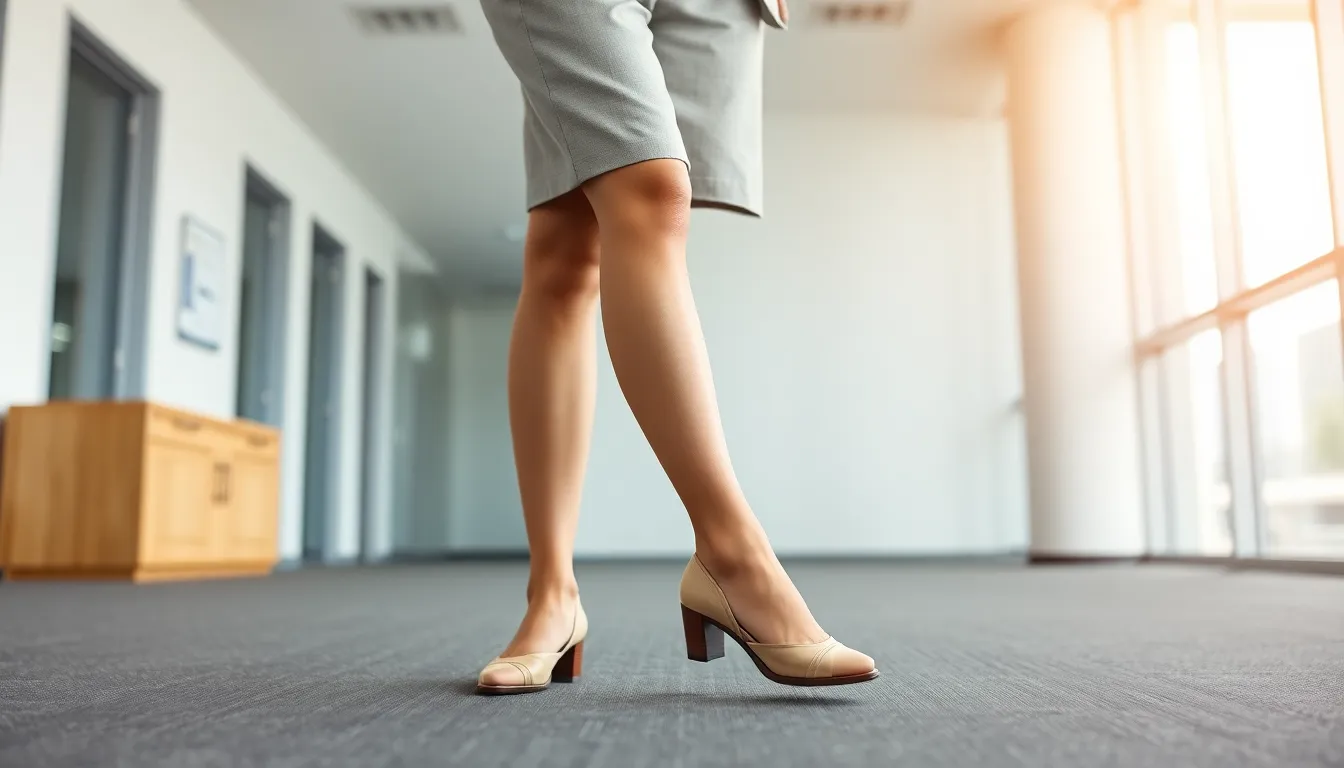
Selecting the right footwear becomes even more critical during summer interviews when heat can make poor shoe choices unbearable. We’ve identified three key areas to focus on for maintaining both comfort and professionalism throughout your interview day.
Closed-Toe Shoe Options for Hot Weather
Laced dress shoes offer the most traditional professional appearance while providing better structure and support than slip-on alternatives. These classic options work well with both dress pants and professional skirts, ensuring your feet stay protected and polished.
Loafers worn with socks create a sophisticated look that’s perfect for corporate environments. We recommend choosing loafers in neutral colors like black, brown, or navy to complement most summer interview outfits while maintaining breathability through quality construction.
Low closed-toed heels provide elevation and elegance without sacrificing comfort during long interview processes. These versatile shoes work exceptionally well with midi skirts and customized pants, creating a refined silhouette that commands respect.
Low wedges distribute weight more evenly than traditional heels, making them ideal for candidates who’ll be walking between multiple interview locations. The broader base offers stability while still delivering the professional height that enhances your overall appearance.
Low Heel Alternatives for All-Day Comfort
Heel heights between 1-2 inches strike the perfect balance between professional elevation and practical comfort for extended wear. We find this range provides enough lift to enhance your posture without creating foot fatigue that could distract from your interview performance.
Wedge styles offer superior support compared to stiletto heels, distributing pressure across the entire foot rather than concentrating it on small points. These designs work particularly well for candidates attending multiple interviews or touring office facilities.
Block heels provide maximum stability while maintaining a sleek, professional appearance that complements customized summer outfits. The wider heel base reduces wobbling and increases confidence when walking across different surfaces during your interview day.
Platform options with low heels can add height while keeping your foot in a more natural position, reducing strain on your arches and toes. We suggest choosing platforms with minimal height difference between toe and heel for optimal comfort during hot weather interviews.
Breathable Materials That Prevent Overheating
Natural leather with perforations allows air circulation while maintaining the durability and professional appearance that interviewers expect. These shoes often feature subtle ventilation holes that aren’t immediately visible but provide important cooling benefits throughout the day.
Canvas and fabric combinations offer lightweight alternatives that won’t trap heat like synthetic materials tend to do during summer months. We recommend looking for shoes with canvas panels or fabric linings that wick moisture away from your feet.
Mesh inserts in strategic locations provide targeted ventilation without compromising the shoe’s overall structure or professional appearance. These features work particularly well in athletic influenced professional shoes that blend comfort with workplace appropriate styling.
Quality synthetic materials designed specifically for warm weather can outperform cheaper alternatives that trap heat and moisture. We suggest investing in shoes made from technical fabrics that offer moisture wicking properties while maintaining the polished look required for interview success.
Master Summer-Specific Styling and Grooming Tips
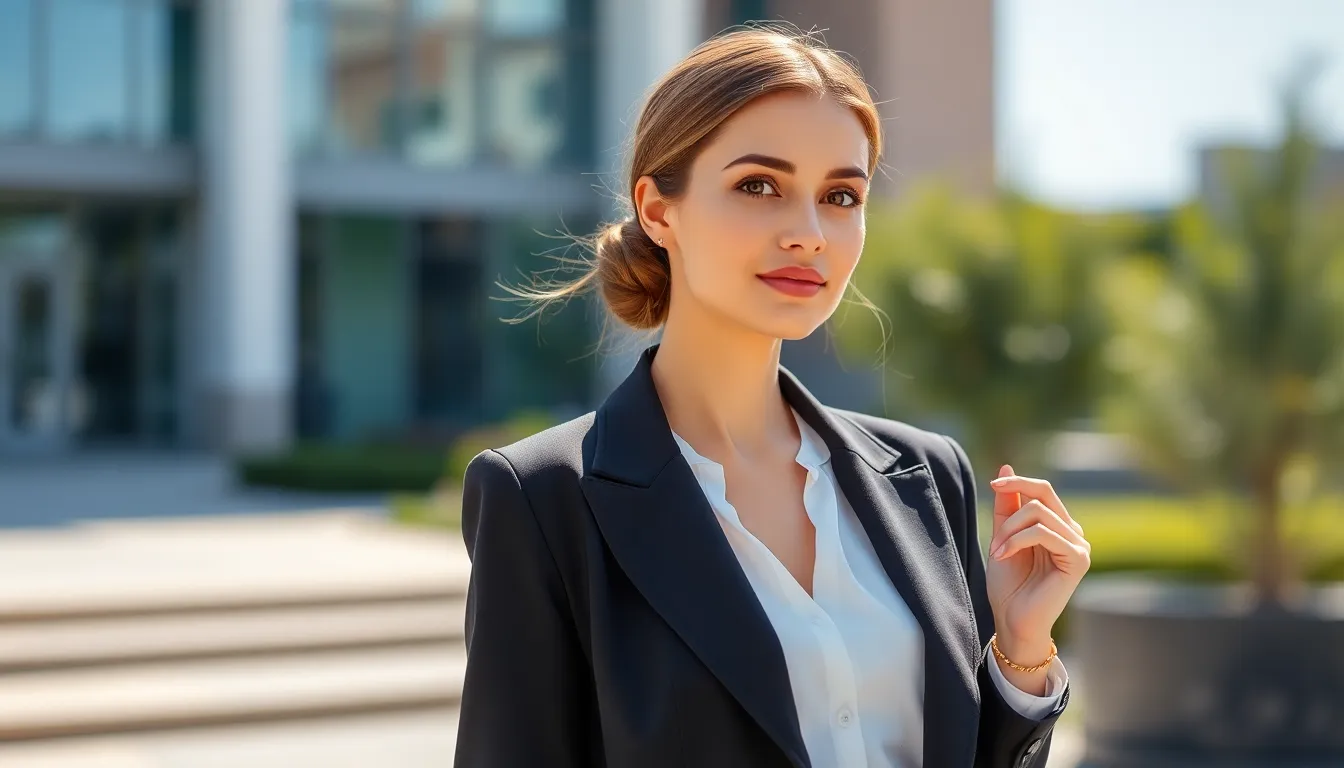
While choosing the right outfit forms the foundation of your summer interview look, perfecting your styling and grooming details ensures you’ll maintain a polished appearance throughout the day.
Heat-Resistant Hairstyles for Professional Looks
Sleek and straight hairstyles offer the most reliable defense against summer humidity while keeping hair away from your face during interviews. This classic style maintains its professional appearance throughout the day and requires minimal touch-ups between meetings.
Low buns create an elegant, composed look that keeps hair completely off your neck and shoulders for maximum cooling effect. Position the bun at the nape of your neck for a sophisticated appearance that works well with both blazers and open necklines.
Professional ponytails provide a practical solution when secured low at the base of your neck rather than high on your head. Choose smooth elastic bands that match your hair color and ensure the ponytail sits neatly without flyaways or bumps.
Structured chignons work exceptionally well for formal interview settings where you need maximum polish and heat resistance. These twisted updos stay secure for hours and create a timeless professional image that photographs well for virtual interviews.
Makeup Techniques That Won’t Melt in Heat
Lightweight foundation becomes essential for summer interviews when heavy products can slide off your face within minutes of stepping outside. Oil-free formulas provide coverage without creating a mask-like appearance that breaks down in heat and humidity.
Waterproof products ensure your eye makeup remains intact throughout long interview days filled with outdoor commutes and air-conditioned buildings. Waterproof eyeshadow primers and mascara prevent smudging and running that can undermine your professional appearance.
Natural makeup looks prove most sustainable in hot weather while maintaining the polished appearance expected in professional settings. Focus on improving your natural features with subtle colors rather than dramatic looks that require constant maintenance.
Setting powder applications in strategic areas like your T-zone and under-eye region help lock makeup in place without creating a cakey finish. Translucent powders work best for maintaining your skin’s natural tone while providing heat resistance.
Accessories That Complete Your Summer Interview Outfit
Professional shoes remain crucial for completing your summer interview look, with low heels and loafers providing the most comfortable options for hot weather walking. Dress shoes with proper ventilation help prevent overheating while maintaining the closed-toe appearance expected in professional settings.
Minimal jewelry choices prevent distractions while adding subtle sophistication to your summer interview outfit. Simple necklaces and classic earrings complement your professional look without overwhelming lighter fabrics or creating additional heat retention around your neck and ears.
Classic handbags in small to medium sizes provide practical storage for interview materials without appearing bulky against summer-weight clothing. Choose structured bags in neutral colors that complement rather than compete with your carefully chosen interview outfit.
Lightweight scarves offer versatile styling options that can transform your look between different interview settings throughout the day. Silk and cotton scarves add visual interest while providing coverage options for varying office dress codes you might encounter.
Avoid Common Summer Interview Outfit Mistakes
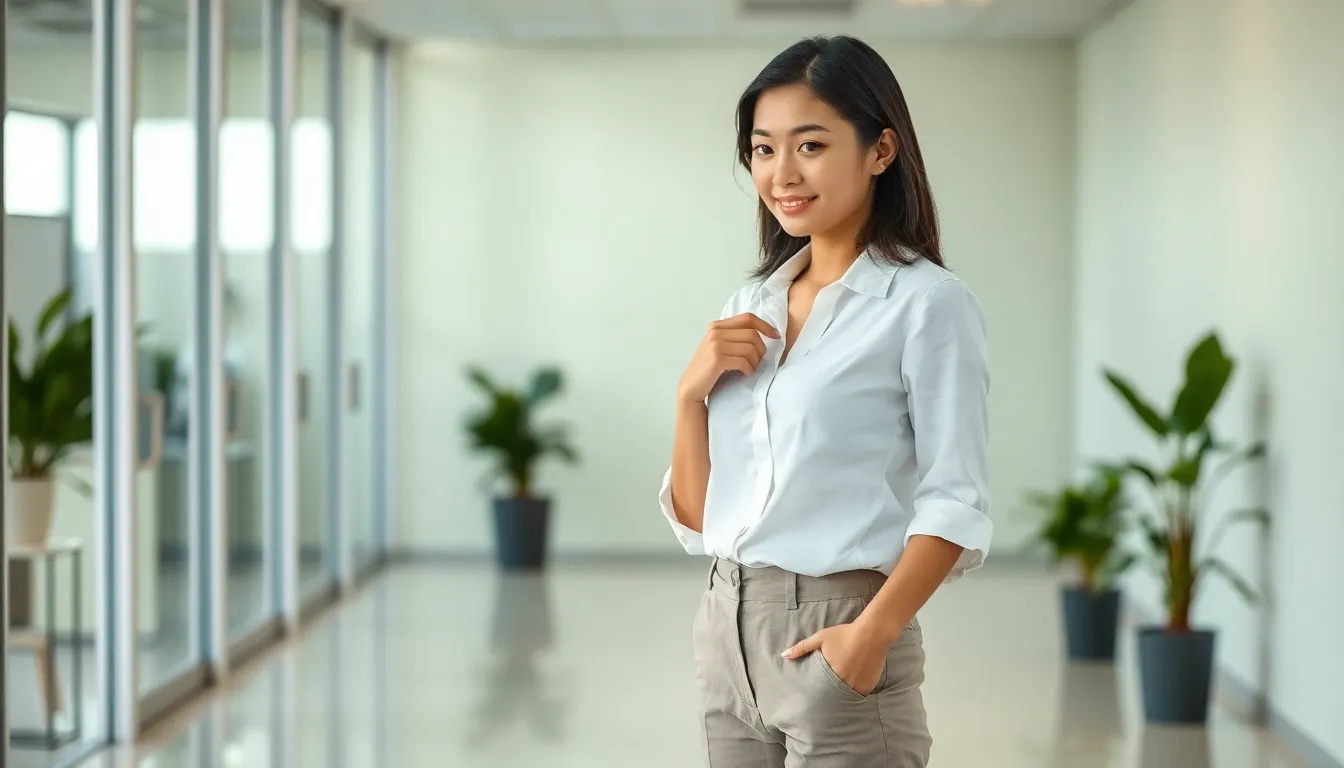
Summer interview preparation requires careful attention to professional boundaries while staying cool. We’ll help you navigate the most common pitfalls that can undermine your professional image during those crucial warm-weather meetings.
Clothing Items That Are Too Revealing for Interviews
Tops should maintain professional coverage without sacrificing breathability. Avoid translucent fabrics that become see-through under office lighting or when slightly damp from heat. Professional blouses and button-downs work best when they provide adequate chest and shoulder coverage while still allowing airflow.
Necklines need strategic planning for summer interviews. Deep V-necks and scooped necklines can appear too casual or inappropriate for professional settings. Choose modest necklines that won’t require constant adjustment throughout your interview, allowing you to focus on showcasing your qualifications instead.
Skirt lengths must follow professional standards regardless of rising temperatures. Keep hemlines at knee length or longer, ensuring your outfit remains appropriate whether you’re sitting or standing during the interview process. Mini skirts and shorts have no place in professional interview settings, even during heat waves.
Sleeve considerations matter more than you think. Tank tops and strapless options leave too much skin exposed for most professional environments. Short-sleeved blouses and lightweight long-sleeved tops provide the perfect balance of coverage and comfort for summer interviews.
Fabrics and Colors That Show Sweat Stains
Moisture-wicking materials prevent embarrassing sweat marks that can distract from your interview performance. Natural cotton blends and performance fabrics designed for professional wear help keep you dry while maintaining a polished appearance throughout your meeting.
Strategic color selection shields you from visible perspiration. Light colors like khaki, pastels, and neutral tones naturally camouflage moisture better than darker shades. Avoid solid grays and bright colors that highlight every drop of perspiration under office lighting.
Fabric weight determines your comfort level during extended interview processes. Lightweight pantsuits and breathable cotton blends prevent the heavy, clingy feeling that comes with traditional interview wear in summer heat. These materials also resist wrinkles better when exposed to humidity and movement.
Pattern choices can work in your favor when selected thoughtfully. Small prints and subtle textures help disguise minor imperfections while maintaining professional standards throughout your interview day.
Footwear Choices That Aren’t Interview-Appropriate
Sandals compromise your professional image regardless of how formal they appear. Even designer sandals with minimal straps expose too much foot area for most corporate environments. Save these comfortable options for after you’ve secured the position.
Open-toe shoes create unnecessary risks during important career moments. Professional settings typically require closed-toe footwear that protects your feet while maintaining appropriate coverage standards expected in business environments.
Casual sneakers and flip-flops automatically downgrade your professional appearance. These comfortable options signal a lack of understanding about workplace dress codes and can immediately eliminate you from consideration in competitive hiring situations.
Overly high heels present practical challenges during summer interviews when you’re already managing heat-related discomfort. Choose professional footwear with heel heights between 1-2 inches that provide elevation without compromising your stability or comfort during the interview process.
Proper professional alternatives include laced dress shoes and loafers that provide full foot coverage while maintaining breathability. Low heels and quality flats with closed-toe designs offer comfort without sacrificing the polished appearance that employers expect from serious candidates.
Plan Ahead for Different Interview Environments

We need to tailor our summer interview outfits based on where the interview takes place. Different environments require exact considerations to maintain professionalism while staying comfortable in warm weather.
Air-Conditioned Office Interview Preparations
Breathable professional fabrics work best for climate-controlled spaces where temperatures can fluctuate dramatically. Cotton tweed and lightweight cotton materials provide the structure we need while allowing airflow during our commute to the office. Two-piece suits in soft neutrals like beige and light gray offer sophistication without compromising comfort when transitioning between outdoor heat and indoor air conditioning.
Layering strategies become essential for offices with aggressive cooling systems. Customized pantsuits paired with lightweight blazers give us the flexibility to adjust our coverage as needed. We can add or remove jackets based on the indoor temperature while maintaining our polished appearance throughout the interview process.
Fit considerations matter more in air-conditioned environments where we’ll spend extended time seated. Knee-length skirts and ankle-length pants with looser fits prevent discomfort from prolonged sitting while reducing heat buildup. Pastels and classic navy colors work particularly well in office settings where professional appearance takes priority over heat management.
Outdoor or Warm Environment Interview Strategies
Comfort prioritization becomes critical when interviews occur in less climate-controlled spaces or outdoor settings. Summer skirts that fall at or below the knee paired with breathable collared tops create professional looks without sacrificing cooling. Button-up shirts in lighter fabrics with short or long sleeves provide coverage while promoting airflow around our bodies.
Fabric selection focuses heavily on sweat-wicking materials and lighter khaki options for pants. We should avoid sheer fabrics and overly tight clothing that can become uncomfortable as temperatures rise throughout the day. Cotton poplin and bamboo cotton blends offer moisture-wicking properties while maintaining the crisp structure expected in professional settings.
Strategic styling helps us maintain polished appearances even in challenging conditions. Structured designs in lightweight materials prevent our outfits from looking casual while keeping us cool. We can choose pants made from performance polyester blends that handle perspiration better than traditional fabrics while still looking appropriate for business environments.
Video Interview Outfit Considerations for Summer
Upper body focus allows us to prioritize comfort in our lower half since only our torso appears on camera. Short or long-sleeve tops with collars in non-transparent, breathable fabrics create professional impressions without requiring full formal attire. We can wear comfortable shorts or lightweight pants that won’t show during the video call.
Visual presentation requires careful attention to colors and patterns that translate well through video technology. Neutral and classic color palettes keep attention focused on our faces and responses rather than distracting elements. Lightweight blazers or jackets add polished layers without causing overheating in our home environment.
Technical considerations include avoiding bright colors or busy patterns that can create visual distortion on camera. We should test our outfit choices beforehand to ensure they appear professional through our exact video setup and lighting conditions.
Conclusion
Landing your dream job starts with making the right first impression and your summer interview outfit plays a crucial role in that success. We’ve covered everything from breathable fabrics and professional colors to appropriate footwear and grooming tips that’ll keep you looking polished even though the heat.
Remember that confidence comes from feeling comfortable in what you’re wearing. When you choose the right combination of professional pieces that work with the weather you’ll be able to focus entirely on showcasing your qualifications and personality.
The key is finding that perfect balance between staying cool and maintaining a professional appearance. With these strategies in your toolkit you’re ready to tackle any summer interview with style and confidence.
Frequently Asked Questions
What are the best fabrics for summer job interviews?
Cotton blends, linen, and moisture-wicking materials are ideal for summer interviews. Cotton blends offer breathability while maintaining structure for blazers and dress pants. Modern linen blends reduce wrinkling while providing excellent airflow. Performance polyester blends and merino wool effectively wick moisture, keeping you dry and comfortable during important interviews.
What colors should I wear to a summer job interview?
Opt for soft neutrals like beige and light gray, which reflect heat and maintain professionalism. Classic navy, light blue, and soft pink provide seasonal color while conveying confidence. Pastels work well for summer interviews, but ensure colors maintain a serious, professional tone rather than appearing too casual or distracting.
Can I wear a sleeveless top to a job interview in summer?
Sleeveless structured tank tops and sleeveless blazers can work for summer interviews when styled appropriately. However, ensure adequate coverage and pair with professional bottoms. Consider carrying a lightweight blazer to assess the interview environment and add layers if needed for a more conservative look.
What type of shoes should I wear to a summer job interview?
Choose closed-toe shoes in breathable materials like natural leather or quality canvas. Laced dress shoes, loafers, low closed-toe heels, and wedges work well. Keep heel heights between 1-2 inches for comfort and professionalism. Avoid sandals, flip-flops, or overly casual footwear regardless of the temperature.
How should I style my hair for a hot weather job interview?
Opt for heat-resistant hairstyles that look polished and professional. Sleek straight styles, low buns, and structured chignons work well in hot weather. These styles keep hair off your face and neck while maintaining a professional appearance throughout the day, even in humidity.
What makeup tips work best for summer interviews?
Use lightweight, oil-free foundations and waterproof products to withstand heat and humidity. Apply setting powder to lock in makeup without a cakey finish. Keep the look natural and professional, focusing on products that won’t run or smudge in warm temperatures.
Should I dress differently for air-conditioned vs. warm interview environments?
Yes, tailor your outfit to the environment. For air-conditioned offices, bring lightweight layers like cotton blazers to adjust to temperature changes. For warm or outdoor environments, prioritize breathable fabrics and moisture-wicking materials. Always research the interview location and dress code beforehand.
What should I avoid wearing to a summer job interview?
Avoid revealing clothing, inappropriate skirt lengths, and fabrics that show sweat stains easily. Skip sheer materials, deep necklines, and excessive skin exposure. Don’t wear sandals, flip-flops, or overly casual footwear. Avoid tight clothing that restricts movement and airflow in hot weather.
How do I prepare my summer interview outfit for video interviews?
Focus on professional upper body attire since that’s what appears on camera. Choose colors and patterns that translate well through video technology – avoid busy patterns or colors that may appear washed out. You can prioritize comfort for your lower half while maintaining professionalism on top.
